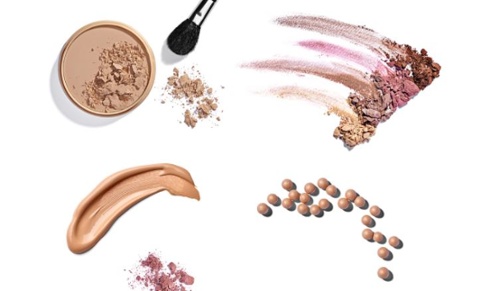Have you ever wondered how makeup is made?
Cosmetics are big business. In North America alone, we spend about $35 billion annually on mascara, foundation, lipstick, and all the rest. Clearly, the art of artifice sells.
However, the former popularity of lead and mercury used in makeup underscores the reason the United States Food and Drug Administration (FDA) plays at least some role in regulating the safety and purity of cosmetics. These days, manufacturers use ingredients judged safe for human contact. But what constitutes “the right makeup”?
For starters, consumers expect consistency. The last few swipes of a tube of lipstick had better look just as “Cinnamon Sugar” brown as the first few did, for example. Of course, consumers consider any number of factors when choosing makeup. Does it last? Does it resist running? Will it continue looking fresh, or wipe off on everything in sight?
To achieve these lofty goals, cosmetics manufacturers have spent years devising carefully guarded formulations. They have also invested in cosmetics manufacturing equipment that’s up to the task of producing extremely well-blended, safe cosmetics with the proper consistency, color, scent, stability and mix of ingredients.
How Is Foundation Made?
Let’s begin with foundation. While there are dry, mineral-based versions of this fundamental cosmetic, liquid foundation is perhaps the most familiar.
Manufacturers begin with oils and pigments, and possibly some fragrance, which must be mixed extremely well to blend all ingredients.
The “blending well” component of this equation is where the right industrial mixing equipment comes into play. To achieve smooth, consistent texture, color and other characteristics, it’s tremendously important that all ingredients undergo the kind of mixing that can’t be achieved with a blender or any other household tool or appliance. Indeed, some of today’s products are only possible using advanced, submicron processing. This is a process by which constituents are reduced in size to vanishingly small particles. Quadro Liquids excels at this technology.
Depending on the final product, cosmetics manufacturers rely on sophisticated mixing machines that are capable of performing challenging tasks — such as the:
- Hydration of thickening and suspending agents
- Production of stable emulsions
- Disintegration of solids
- Dissolution of powders
- Blending of liquids of different viscosities
- Mixing of thickeners, rheology modifiers and stabilizers
Not only that, but all of these processes must occur under controlled, consistently reproducible, completely hygienic conditions. After all, health and safety are at stake, and the FDA is paying attention.
How Is Mascara Made?
To enhance the drama of the eyes, mascara is used to add length, color, thickening and definition to eyelashes. Jet black is the most popular color. In some countries, potentially toxic substances such as coal and tar are used for this purpose. Here, manufacturers rely on carbon black; a safer alternative. To achieve brown or other colors, pigments such as iron oxide or other minerals may be added.
Various methods and formulas exist, but to make mascara, many cosmetics manufacturers create an emulsion consisting of water and various oils, waxes and pigments. Because it is used around the eyes, it’s critical that mascara contain no contaminants or irritants. As any home cook knows, blending oil and water is challenging, to say the least. Modern cosmetics makers use sophisticated mixing technologies to achieve stable emulsions: Smooth mixtures containing extremely small particles of both water and oils, with one uniformly dispersed within the other.
Other Makeup Items
Other popular makeup items, such as lipstick, are created through similar processes — using various waxes, oils, pigments, and antioxidants or preservatives — to prevent spoilage of the final product. Scores of different FDA-approved pigments may be used, ranging from the old standby, carmine (a deep red generated by cochineal insects), to plant-based annatto, to FD&C Red No. 40, to metallic oxides, etc. Since lipstick can be ingested, special attention must always be paid to the safety of the ingredients.
Quadro Liquids is proud to supply industry-leading cosmetic and personal care mixing equipment to the world’s leading cosmetics and cosmeceutical manufacturers. To learn more about our world-class machinery, contact us here. A member of our highly trained sales staff will contact you promptly.


